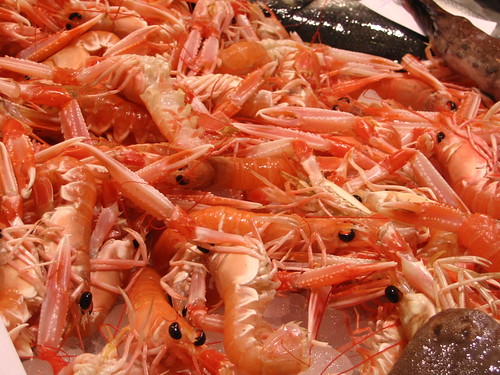Should You Clean Frozen Shrimp Before Cooking Them?
Shrimp #Shrimp

Shrimp: America’s favorite poppable seafood. On a per capita basis, only Japan eats more shrimp than the U.S. — the average American consumes nearly three pounds of it per year. Shrimp dishes are common to a vast number of disparate cuisines, so chances are you’ve not just had shrimp but probably cooked it yourself at some point — and if you don’t live near a coast, it was probably from a bag of frozen shrimp. So you’re probably at least loosely experienced with the process of cleaning the crustacean.
But do you actually need to clean it? Is frozen shrimp already cleaned for you? The answer, it turns out, is that you probably don’t need to do anything to clean it. Not only is this true for frozen shrimp, but it’s true for pretty much all shrimp; cleaning is ultimately a matter of preference far more than one of necessity. Whether you want to is another matter entirely.
Read more: 13 Tips To Make Your Shrimp Taste So Much Better
Shrimp Doesn’t Actually Need To Be Cleaned
shrimp on skewers on plate – Lisegagne/Getty Images
The health risks aren’t an issue here. In general, properly stored seafood isn’t as susceptible to bacteria like salmonella as something like chicken; this is why you can eat raw fish without serious health risks. Granted, you shouldn’t eat raw shrimp, but you also don’t technically need to worry about washing it off first. It’s good to go right out of the package and won’t hurt you.
But do you want to? Obviously, you’ll want to peel at least a significant portion of the shell off shrimp; that’s not exactly tasty. But you’ve probably seen cooking shows where they describe that black vein running along a shrimp’s back as “poop,” which is not entirely accurate; it’s actually the shrimp’s digestive tract. Should you remove it, then? Probably. It’s not going to hurt you to eat it, but it’s certainly not visually appealing and can potentially have a slightly gritty texture. It’s probably best to remove it just for aesthetic and textural reasons.
Cleaning Shrimp Isn’t Hard, If You Really Want To
hands holding raw shrimp – Bigc Studio/Shutterstock
If you feel you absolutely need to clean your shrimp before cooking it, though, there are things of which you should be aware. If, for whatever reason, you’ve gotten shrimp with the heads still on (though this isn’t typical for frozen shrimp), cut those off first; they’re edible but not exactly a textural sensation. Next, remove the shell (unless you’re grilling it) and the legs; these should come off easily. Whether to remove the tail is a matter of personal preference.
Once you’re ready to wash, use cold water because shrimp are sensitive to temperature, and hot water can essentially par-cook them. If you’re applying direct heat using a pan sear or a grill, be sure to dry them afterward, too; excess moisture will make it harder to get that sear. Then comes the deveining. Just make a shallow cut along the back of the shrimp and use the tip of your knife to peel out the black gunk. That’s it; that’s the whole process. Whether you decide to devein and clean your shrimp or not, know that you’re probably safe either way.
Read the original article on Daily Meal.